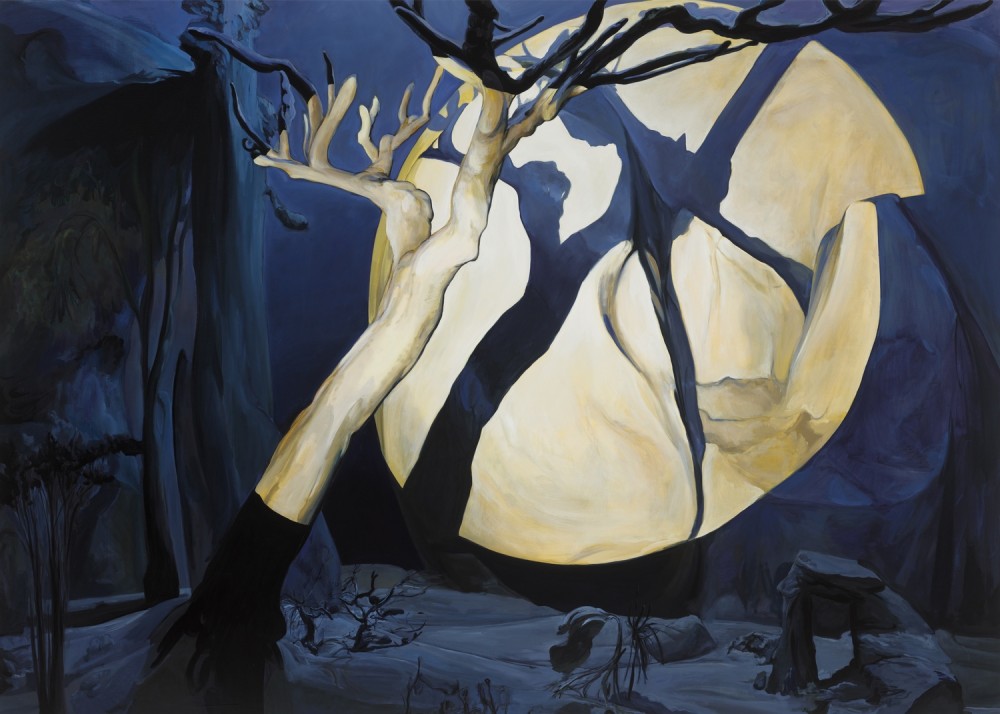
Emma Webster: Intermission
Emma Webster paints landscapes that are not landscapes. Her work fuses high technology with traditional painting techniques. Her studio is a fascinating combination of a computer lab and a Renaissance artist’s atelier. She has invented a process that fuses hand drawing, virtual reality and sculptural models to generate her images. The resulting compositions are then meticulously hand painted onto canvas with astonishing virtuosity.
Webster will create an immersive installation, building a black box theater within the gallery’s white cube. Her oil paintings will serve as backdrops alongside trompe l’oeil work that confuse and confound audiences with redefined notions of set design, exhibition staging, and props. Through the structure of her built-in theater, Webster creates a new labyrinth of scale, forcing viewers to contend the real with the unreal. By placing visitors both onstage and backstage, Webster blurs the lines between art and object, set, performance and time. Her new body of work explores her interest in concepts relating to staged landscapes and theatrics. Painting, drawing, and sculpture interact fluidly with peripheral elements common to most theatrical settings. Bringing these seemingly disparate parts together, Webster establishes a connective tissue between artifice and convention. The gallery itself is transformed into a mysterious space that beckons an awaited performance, or possibly a performance that has already taken place.
The theatrical setting reflects her sense of landscape as theater. The forests and glens depicted in her paintings are not real places. Webster describes her compositions as “optically devious”. Reality and illusion are deliberately confused. It is plein air painting made indoors.
Webster’s brushwork is seductive. She uses more than fifty shades of green to envelop the viewer in her lush, constructed landscapes. Her greens run cool. She thinks of them as synthetic, as opposed to the greens one finds in nature, which are warmer. Virtual reality is used in the generation of her imagery, but her painting hand is sensuous and distinctive. Her technique involves glazing, mixing, dry brushing and impasto.
Emma Webster (b. 1989) lives and works in Los Angeles. Her relationship with the surrounding landscapes of the city, both urban and rural, informs her borrowing of elements that are at once both familiar and foreign. A self-described painter of landscapes, but not a landscape painter, Emma Webster paints scenographic worlds. She models her panoramic paintings from greenspace built in virtual reality through modern technologies like Oculus and Blender. Using these tools as a method of draft making, Webster effectively creates, alters, and inhabits the perceived worlds of her creation. The confluence of these illusory and formal elements allows Webster to reveal the intertwined histories of landscape painting and set design. With Intermission being the artist’s first solo exhibition in Los Angeles in over four years, this new body of work highlights greater parallels between the overarching history of the city and the nature of the exhibition itself. Webster’s work assesses the literal and metaphorical meanings of staging and looking. Webster’s dynamic exhibition design reflects and refracts centuries-old affectations found in Hollywood as well as Broadway.